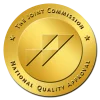Adolescents are faced with many challenges as they enter the often difficult teenage years. While many adolescents successfully navigate this period, some may resort to self-harm as a way to cope with overwhelming emotions. As a parent or guardian, it is essential to understand ways to offer guidance and support for your child who engages in such behaviors.
Understanding the signs of self-harm is crucial for parents, educators, and caregivers. It’s important to recognize that self-harm manifests in various forms, including:
- Cutting
- Burning
- Scratching
- Hitting oneself
Signs of self-harm may include unexplained cuts or bruises, particularly in hidden areas, such as the wrists, thighs, or abdomen. Teens engaging in self-harm may become increasingly withdrawn, wear concealing clothing even in warm weather, or express feelings of sadness, hopelessness, or anxiety.
While the reasons behind self-harm are complex and multifaceted, various factors can contribute to it, such as:
- Emotional distress. Adolescents who are dealing with overwhelming emotions and distress may self-harm to cope with these feelings.
- A need to regain control. Adolescents facing feelings of inadequacy, loneliness, or intense pressure may resort to self-harm as a way to regain a sense of control or alleviate emotional pain temporarily.
- Underlying mental health conditions. Mental health conditions, such as anxiety, depression, or trauma, can contribute to self-harm behaviors. Understanding that self-harm is a symptom rather than the root cause is important for effective intervention.
How to Approach Your Child
Approaching an adolescent or teenager engaging in self-harm requires empathy, sensitivity, and open communication. Creating a non-judgmental and supportive environment is essential, ensuring your child feels safe discussing their struggles.
- Choose a suitable time and place for the conversation, expressing concern without accusations.
- Use “I” statements to convey your feelings and observations, such as “I’ve noticed you seem sad, and I’m here to listen.”
- Avoid confrontations or ultimatums, which may escalate tensions and hinder honest communication.
- Listening actively is critical during these discussions. Give your child the opportunity to express their feelings without interruption, demonstrating that you are there to support them unconditionally.
Remember that self-harm is often a coping mechanism, and the goal is to help your child find healthier alternatives to manage their emotions.
Types of Treatment Options for Self-Harm in Adolescents
Once you’ve established open communication, exploring treatment options is crucial. Therapy or counseling can give adolescents the tools to understand and manage their emotions more effectively. Therapists can help teens identify the underlying issues contributing to self-harm and develop healthier coping mechanisms.
Cognitive-behavioral therapy (CBT) is one effective approach that focuses on identifying negative thought patterns that contribute to self-harm behaviors. Dialectical behavior therapy (DBT) also teaches skills such as emotion regulation and distress tolerance, providing practical tools for managing intense emotions.
In severe cases, a psychiatric evaluation by a qualified professional may be necessary to determine if medication is appropriate. Medication can help alleviate symptoms of underlying mental health conditions that may be causing your child to self-harm.
Family involvement is crucial in the treatment process. Attending therapy sessions together, participating in family counseling, and fostering open communication within the family unit can contribute to the overall healing process.
Creating a Supportive Environment
Creating a supportive home environment is essential for the recovery of adolescents engaging in self-harm. Encourage healthy coping mechanisms, such as engaging in creative activities, practicing mindfulness, or participating in sports. Establish routines and boundaries that provide structure and stability at home.
It is also important to involve your child’s school community in the support network. Educate teachers and school staff about the situation, ensuring they are aware of warning signs and can provide additional support when needed.
In addition, developing a support system and working closely with mental health professionals to create a comprehensive support plan can address the emotional, academic, and social aspects of the adolescent’s life.
Understanding self-harm in adolescents requires a compassionate and informed approach. By recognizing the signs, understanding potential causes, and approaching teens with empathy, parents and caregivers can play a crucial role in supporting their children through the recovery process. Treatment options, combined with a supportive environment, offer hope for adolescents struggling with self-harm, guiding them toward healthier ways to navigate the challenges of adolescence and beyond.
If you notice your child is struggling with mental health issues or shows signs of self-harm, reach out to us today. At Creekside Behavioral Health in Kingsport, Tennessee, we offer programs designed specifically for patients between 7 and 17 years of age. Our psychiatric services include a short-term acute inpatient psychiatric program, outpatient day treatment, and a partial hospitalization program known as our day program. To find out more about our programs and services, please contact us today.







